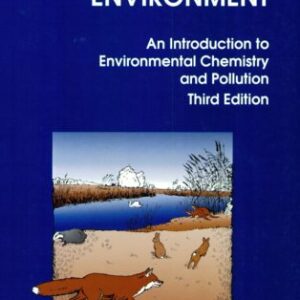The chemical study of archaeological materials
Archaeological Chemistry, Second Edition is about the application of the chemical sciences to the study of ancient man and his material activities. The text of the book centers on the use of chemical methods, but also refers to the contributions of physics, biology, and genetics to archaeological research.
Subjects discussed in the book include the determination of the nature of ancient materials, their provenance and age, the technologies used for the production of man-made materials, and the analysis of ancient human and animal remains (such as bone, dried blood, and coprolites), which yields information on ancient diets, kinship, habitancy, and migratory patterns.
New developments in analytical chemistry and in related disciplines, which have contributed to archaeological research since the first edition of the book was published, are dealt with in this edition, which also includes:
*
Updated information on the study of the nature, age, and provenance of ancient materials
*
New sections on organic, biological and genetic studies
*
Glossary
*
Extensive bibliography
The book is intended primarily for archaeologists, physical anthropologists and students of archaeology and physical anthropology, but will also be of use to conservators, curators, and art historians. Natural scientists reading it will become acquainted with advances in archaeological research which were made possible only by the application of chemical, physical, and biological methods and techniques.Content:
Chapter 1 Minerals: Rock and Stone: Pigments, Abrasives, and Gemstones (pages 1?91):
Chapter 2 Lithics: Flint and Obsidian (pages 93?110):
Chapter 3 Sand: Glass, Glaze, and Enamel (pages 111?137):
Chapter 4 Secondary Rocks: Building Stone, Brick, Cement and Mortar (pages 139?152):
Chapter 5 Ores: Metals and Alloys (pages 153?208):
Chapter 6 Sediments and Soils (pages 209?229):
Chapter 7 Clay: Pottery and Other Ceramic Materials (pages 231?260):
Chapter 8 The Biosphere: Organic and Biological Substances (pages 261?287):
Chapter 9 Carbohydrates: Wood, Gums, and Resins (pages 289?309):
Chapter 10 Lipids: Oils, Fats, and Waxes; Soap (pages 311?319):
Chapter 11 Proteins: Skin, Leather, and Glue (pages 321?341):
Chapter 12 The Nucleic Acids: Human Traits; Genetics and Evolution (pages 343?352):
Chapter 13 Fibers: Yarn, Textiles, and Cordage; Writing Materials (pages 353?364):
Chapter 14 Dyes and Dyeing (pages 365?378):
Chapter 15 Bioinorganic Materials: Bone, Ivory, and Shell; Phytoliths (pages 379?392):
Chapter 16 Some Ancient Remains: Mummies, Fossils, and Coprolites (pages 393?403):
Chapter 17 The Environment and Decay of Archaeological Materials (pages 405?432):
Chapter 18 Authentication of Antiquities (pages 433?444):

![[PDF] Archaeological Chemistry, Second Edition Zvi Goffer(auth.)](https://pdfelite.com/wp-content/uploads/2024/04/1ccdc61833e03fdcb7ca803e974f6690-d.jpg)




Reviews
There are no reviews yet.